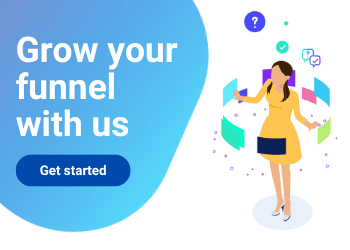Shifting Gears – Taking Your Marketing Virtual
John B: Hey everyone, welcome to Life is Digital. I am your host, John Bianchi. Get ready to learn about digital marketing as we share our knowledge and perspectives on current trends, best practices and actionable tips to help you grow your business in the digital age. Well, I am so excited to have a really good friend of mine on today. John Fitzgerald has been a Global Marketing Manager for several Fortune 500 capital equipment companies, and I am really excited to have a conversation about storytelling and marketing with him today. Hey, John, thanks for being on.
John F: Hi John, it’s great to be here.
John B: I’m really looking forward to our conversation today because in our pre-show conversation, I know you were going to potentially share some really cool industry facts about how companies have to change their marketing now as the consumer or customer has become a lot more market savvy. You can’t just talk about product benefits and features anymore, you’ve really got to set yourself apart, so maybe you could share some of that insight with the audience today.
John F: Sure, John, I’d be happy too. And one of the things that COVID pandemic has kind of taught us is that doing things face-to-face just isn’t going to work anymore – the ability for your sales rep to stand with his customer and talk to him and build that relationship is gone. So we’ve got to think about a different delivery method of our company’s message, one of the big ones now is video, but the airways are flooded with all kinds of videos with all kinds of marketing fluff and sales fluff that really doesn’t do anything to help the customer and honestly, it just wastes time. I think the important thing companies need to think about is the authenticity of their message, they’ve got to now build trust and be able to demonstrate their product in a way that they haven’t had to do before, because they do not have the ability to do face-to-face…
John B: That makes absolute sense. And this is definitely something that we talk with our clients a lot, I love the two things that you said, and I want to pull those out. You said that the marketing and the marketing air waves are full of just so much fluff and it’s about building trust. How do you recommend brands and companies build trust when maybe it’s not… Let’s say a product that’s easily understandable? It’s not necessarily a consumer product. Capital equipment company might have a different way that they present their message. What’s a way that you can build trust and develop that story when maybe it’s a little bit more unique of a perspective to a potential consumer.
How do companies build trust with their potential customers?
John F: Well, in what I’ll call the pre-COVID days, you could take a potential customer to see an actual piece of equipment, whether you brought them into your site and did a formal demonstration, or you did a trade show where you had equipment available for view… Again, possibly demonstration, the customer could put his hands on it, he could ask questions, he could watch an operation that’s gone on right now. Hopefully he comes back, but really right now, getting customer in front of equipment… It’s very, very challenging. So one of the best things they can do is have a reference. You can provide another customer who’s very satisfied with your product, who can talk independently without you being there, without your company being there about their experience dealing with your company. Because especially in the capital equipment field, the purchase is only one part of the overall solution, if you will, right? Support availability of parts, service… etc… all of those things are an important part of that overall purchase in that capital equipment, and everybody talks about “They have 24 hour support, and they always have the part you need in stock.” But, they hear from another person using that piece of equipment that “Yeah, we had a break down at 2 o’clock in the morning, we call their 24 hour help line and a guy answered it on the second ring, and they had a spare part we needed, and it went out in federal express… 6 o’clock the next morning, and we had it at noon.” Hearing that from another person as opposed to the company selling the equipment is just invaluable to build that trust with the customer.
John B: I love what you’re saying there, and it’s taking the idea of testimonials and your reviews as a business to the next level by creating that potential of a more tangible experience. Do you feel that video is a way that companies can kind of let the consumers or the end user customer under the hood per se? If you’re a manufacturing plant or a capital equipment company or a parts manufacturer, maybe in the past, you didn’t even bring people on site-to-see, or like you said, you might see them at a trade show, but is video something that can either replace or maybe in the future still enhance that experience that someone may have when getting to know the story behind the brand?
How can video tell a better story to the customers?
John F: Absolutely. Videos become the most critical tool in this COVID pandemic age, because it gets the customer to see the things that they can’t physically go and see, but a couple of things that the selling company needs to think of, the capital equipment company that is, You’ve got to be sure that you talk about the benefits that the customer will receive, not only as far as a different technology that you may be selling, but the business benefit that the customer is going to get. For the longest time, I worked for an IT company, so I was all about the specs, how fast it went in, all its widgets and things like that, and never talked about how that benefited a customer. Nobody cares if you go twice as fast as all of your competition. If they can’t understand in their mind what that twice as fast means… Does that twice as fast, lower my costs? Does that twice as fast, improved my production? Does it increase my revenue? Just twice as fast is really only important for the sake of drag racing. Okay, it’s not necessarily something that your customer may be interested in, they’ve always got to be sure to relate those benefits to business benefits that the customer can actually realize.
John B: Well, I love what you’re saying there, and it’s actually a great analogy because I actually did have the social media manager for a drag racing company on the podcast a few weeks ago, and it’s great to see that perspective where they’re using video to bring fans into a “behind the scenes” atmosphere that maybe you couldn’t have had in the past, and obviously didn’t have access to… I love what you said there about telling the story about how there’s a benefit to the customer. How important do you feel brands will need to make that change, and maybe even going beyond just the benefit to their initial customer, but maybe the social or the environmental aspect, or even the down the line consumer aspect to how their part or their system enhances the community as a whole?
John F: I see that happening more and more, especially as the younger generation starts to join the workforce – sustainability, the different things related to the environment and trying to treat the planet better has really come to the forefront. A generation or two ago, you might say, profit was number one, I think we’ve reached a much better balance where profit is important, that’s the reason the company is in business, but responsible profit is more important because future generations are going to have to live on this planet long after the profit has been made by the executive who’s running the company now.
John B: That makes absolute sense, and I definitely see that in terms of the changing workforce, even when you look at the new environment of working from home, or you did have companies like we work that we’re looking to make a much more collaborative experience, even for the individuals that are engaged with the brand on a day-to-day basis and feel that what they’re doing and how they’re a part of something that makes a bigger impact. You know, John, I’ve learned a lot from what you’ve said today, I wonder if you could leave the audience with a few key takeaways maybe around the importance of video and story telling, maybe how the sales process can be enhanced by marketing. Some things that may be a business owner or a CEO who might be tuning in could learn about how they can enhance their brand through some of the strategies that you mentioned.
Key Takeaways
John F: Sure, John, I’d be happy to. One, as we talk about earlier, authenticity. Tell the truth to the customer… Like he knows something. I see a lot of companies treat their customer like they don’t have a knowledge base, don’t talk down to them, bring them up to understanding your product, but the biggest thing I see in video lately has been that while you’re trying to convey information about your product or your service, I see very few videos and with an actual call to action for the customer, the customer sits there and watches two to three minutes of good information about the product, what it will do to help the customer. Will it benefit the customer? And they get the customer all jazzed up, but then they don’t tell the customer what to do next. Have a call to action, have your phone number, have them contact us. Here’s our sales rep, here’s his name, here is our website to learn more. Do something to make the customer take some action to act on the excitement you’ve just created otherwise five minutes from now, they’ve watched two other videos and they’ve completely forgotten about you.
John B: I can’t agree more. And when we work with our clients, we tell them that not only are call to action’s important, but I love what you mentioned there about, “Hey, this is our website. These are the other areas you can get in touch with us.” It’s so important for brands to have a holistic perspective when it comes to their marketing, and to look at it as not the opposition of marketing and sales, but that hand-in-hand partnership to bring the brand message forward, and like you said, to deliver that benefit to the consumer and maybe ultimately the end user of the product. Well, John, This has been a fantastic and an excellent conversation. Thank you much for taking time out of your busy week to hop on with me today.
John F: Pleasure was all mine, John.
John B: Well, I also appreciate you, the audience for joining us on this episode of Life is Digital. I am your host, John Bianchi. Please remember to rate, review and subscribe to the show in the link section below. Until next time. Don’t stop marketing.










